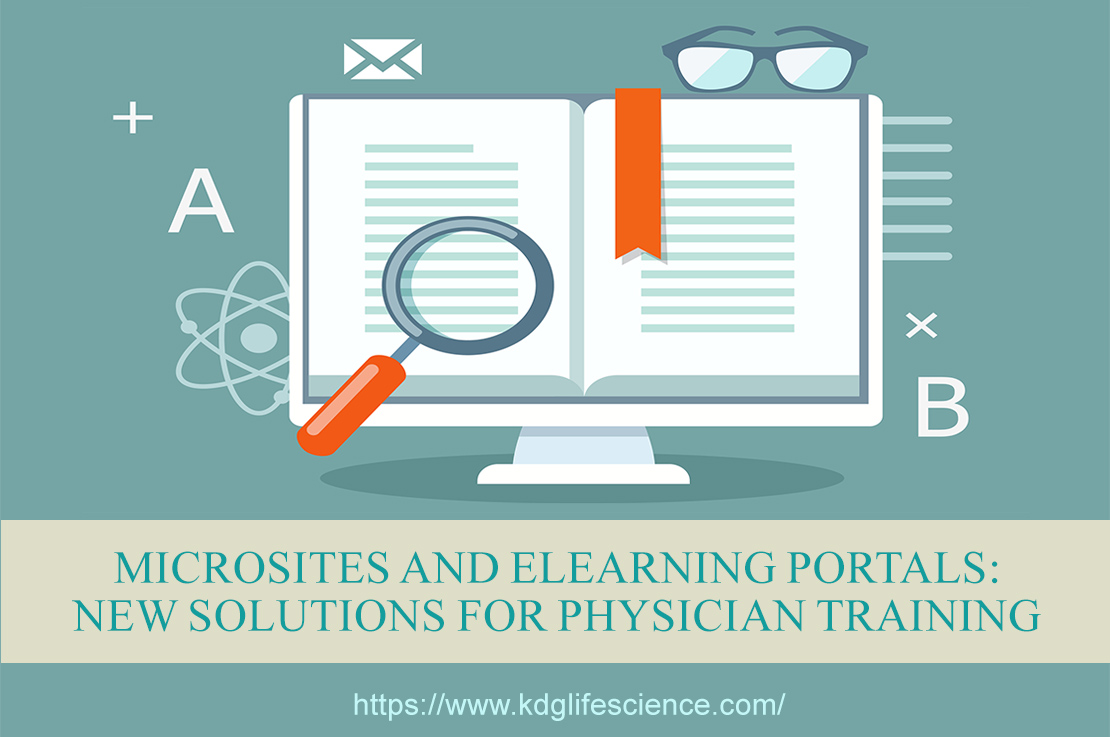As exciting and potentially life-changing as the constant new developments in healthcare technology are, they come with a big price: physicians need to find ways to take time out of their incredibly hectic schedules to keep up with the latest devices, implant techniques, drug therapies, and clinical studies evidence. This is no easy task.
The training itself takes focused time and effort, and a physician’s professional demands make this an even more challenging feat. Somehow physicians need to find the time, space and energy to devote to new developments on top of demanding work, long shifts, and professional obligations. Too often, physicians struggle to make time for the training they need and given how easy it is for their jobs to take up all of their time, they often leave training unfinished. It is to their advantage that creates a big hassle including juggling schedules, subpar training delivery, and other problems.
This is where microsites come in. With their targeted approach and ease of access, microsites and learning portals provide unique advantages to physicians who need to stay on the cutting edge of medical developments.
The advantages of microsites
First of all, how do we define a “microsite”? A microsite is a single, focused webpage or series of web pages that cover one topic. They’re usually attached to a bigger company, brand, or organization, but have their own domain or subdomain. In marketing, their audience is a single customer demographic or campaign.
The content you’ll find on a microsite is both directed, in the sense it’s tailored to the audience, and segmented, in that it’s organized into small, digestible pieces. The content is often interactive, engaging, and particularly relevant to the audience given how tailored it is to their needs and preferences. Microsites tend to be easy to build but have all the capabilities of a full website.
In terms of training, microsites have a lot to offer. They’re accessible anywhere, from home to office and beyond, including mobile platforms or tablets. This means that physicians don’t have to worry about scheduling concerns – they can make time for training whenever they’ve got a spare moment, rather than re-arranging their professional lives to accommodate a class. You don’t need special software or access credentials to log in – you can just jump right in.
What’s more, microsites are easy to make and update, meaning they keep pace with the fast-moving world of healthcare technology. With new devices and techniques being developed all the time, it’s a huge advantage if training can be made available right away instead of months down the line, and it’s an even bigger advantage if the training can be updated as devices are improved or in light of the latest research.
Often, physicians have a very specific set of skills they need to brush up on or technology they need to learn. Microsites can give them the training they need in a precise, engaging way that is also respectful to their time. And because microsites are so easy to access, they can act as reference points for learners whenever they have a question about something new they’re trying to implement.
Last but not least, microsites also offer some advantages over classroom training. They can combine images, interactivity, sound, and video, offering the learners a multi-sensory experience. This is an especially big advantage when it comes to content for physicians, which often involves diagrams and other visuals. Technology, too, tends to benefit from being taught in a way that allows people to see how a device works, watch it in action in a video, etc. With the microsite format, different types of learners are free to learn in the ways that suit them best, and, learning-wise, everyone benefits from information being presented in multiple mediums.
What about learning portals?
Learning portals are single-entry points for educational access. They’re a user-friendly interface that acts as an intermediary between the learner and the Learning-Management System, which is often substantially less user-friendly. Learning portals are collections of reliable, credible, up-to-date, peer-reviewed content, usually featuring an extensive base of content from a diverse array of experts. Since the content is all from the same source, you know the courses offered will be top-notch!
Because learning portals can organize such a diverse array of information, they can act as a nexus for the subjects they teach, combing texts, interactivities, games, PDFs, media, links, assessments, and even a variety of interlinked courses together for the convenience of the learners. At the same time, these resources are searchable, meaning that learners will be able to search for the reference materials they need and find them right away. And just like with microsite content, these learning paths and collections are easy to update in light of new developments and evolving needs. Learners won’t need to be constantly concerned that they’re missing a new development or can’t keep up – they’ll know exactly which courses they need to take and when.
The sheer amount of information available can be incredibly overwhelming. Often, learning portals are incredibly personalized, allowing employers to select exactly what their learners need to know – and learners can select their own content paths based on their needs. Not only that, but Learning portals offer reporting, which means that learners, and their employers, can see their progress and performance. In addition, reminders can help busy physicians finish out their work when it is taking up a lot of their time.
Technology can help you teach technology
It’s clear that at the rate technology is progressing, old classroom training solutions can’t work. They can’t keep up with the pace or deliver the convenient, on-demand, instantaneously-updated training that physicians need to stay up-to-date and do their jobs to the best of their ability. What’s needed is a combination of solutions that are accessible both online and by phone, are targeted toward the exact knowledge their learner base needs, and provide high-quality instruction on the important developments physicians should know about.


Leave A Comment